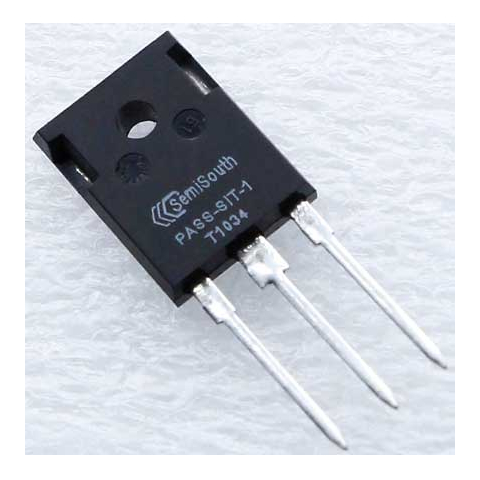about Audio, High Fidelity
& Home Entertainment technologies
pid: 607-2025/10/01 (v1.2)
Privacy Policy

Source: Preliminary Introduction, Last Accessed: 2018/06/07
Nelson Pass recently gave some details about the SIT-3 power amplifier, the successor to the SIT-1 and SIT-2 amplifiers which is now in production. Like the former models, the new amp uses a Static Induction Transistor (aka VFET) in the power stage of a simple no feedback amplifier.
This SIT was uniquely fabricated from Silicon Carbide with the character of a tube Triode – acting more like a voltage controlled resistor than a current source. The primary benefit of the SIT is the much-desired audio quality of a Triode tube, and is different from ordinary FETs which have a Pentode character. Unfortunately, there was only one production run of this transistor, commissioned by First Watt and made by the now defunct SemiSouth, so there is only a limited quantity. Most of these SIT parts were used up in the first two amplifier models, but a relatively large portion were held for service needs that did not occur. A portion of these remaining parts have been allocated to the SIT-3.
According to Pass' preliminary introduction, there is a major difference between the SIT-3 and the SIT-1 and 2 as the later were operated the transistor in Common Source Mode, which delivers both voltage and current gain, while the former (SIT-3) operates in Common Drain Mode, which delivers only current gain – it is a voltage follower. It is unique because it operates in a push-pull topology, which Pass calls DEF - the Depletion type N channel SIT is mated with an Enhancement type P channel MOSFET to form a self-biasing Class A power follower. Apart from elegant simplicity, this has the square-law character of a Triode circuit but with more current available to the load. Compared to the single-ended SIT-1 and 2, this push-pull Class A has twice the power into 8 ohms, eight times the power into 4 ohms, 10 times the damping factor, and one-fifth the distortion, while having that second harmonic character. This follower stage does not provide voltage gain, so the SIT-3 uses a high quality auto-former to boost the preamp voltage by 11 dB, buffered by push-pull J-FET followers to give an input impedance of 200kOhms.
Maximum output is 18 watts at 8-Ohm loads, 30 watts at 4-Ohm loads, with a damping factor of 30. Frequency response is 10Hz-50kHz (-0.5dB/– 3dB) and output noise 50uV unweighted (20Hz-20kHz).
For more information: http://www.firstwatt.com/

